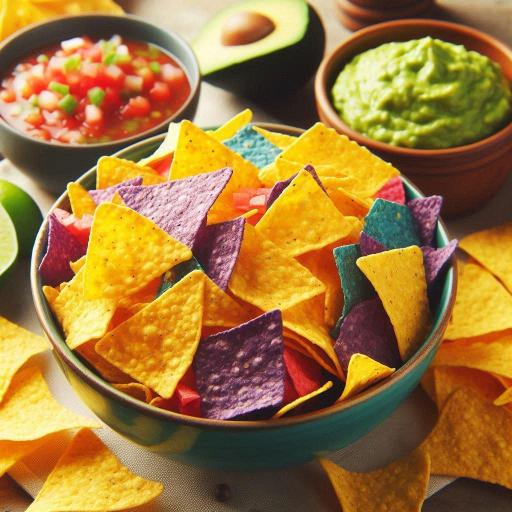Put Those Down! Corn Chips
Go get a healthy Mexican meal with grilled chicken and....

A standard serving of corn chips, around 10 chips, contains approximately 140 calories, 7 grams of fat (including saturated fats), and 18 grams of carbohydrates. These carbohydrates are primarily in the form of starch and sugars, resulting in a high glycemic index (GI). Foods with a high GI can cause rapid spikes in blood sugar levels, leading to a subsequent increase in insulin production.
When a healthy meal, often balanced with proteins, healthy fats, and complex carbohydrates, is accompanied by just 10 corn chips, the glycemic load of the meal can surge. The quick digestion and absorption of the simple carbohydrates in corn chips prompt an immediate glucose influx into the bloodstream. This sharp rise in blood sugar triggers the pancreas to secrete insulin rapidly to manage the glucose levels.
Elevated insulin levels post-meal can lead to a couple of metabolic consequences. First, the quick energy spike followed by a rapid decline can leave you feeling hungry sooner than anticipated, potentially leading to overeating. Second, consistently high insulin levels can promote fat storage, particularly around the abdomen, and impair the body's ability to burn fat efficiently.
Frequent consumption of high-GI foods like corn chips can contribute to insulin resistance over time, a precursor to type 2 diabetes. It can also lead to chronic inflammation and metabolic syndrome, increasing the risk of heart disease.
While 10 corn chips may seem insignificant, they can disrupt the delicate balance of a healthy meal. Opting for lower-GI alternatives such as whole-grain crackers or vegetable sticks can maintain stable blood sugar levels, support a healthier metabolism, and keep insulin spikes at bay. Moderation and mindful eating are key to preventing these seemingly small indulgences from becoming metabolic pitfalls.
Updated: August 13, 2025 10:19
Category: Nutrition
Keywords: calories carbohydrates
References
1. Ludwig, D. S. (2002). The Glycemic Index: Physiological Mechanisms Relating to Obesity, Diabetes, and Cardiovascular Disease. _Journal of the American Medical Association (JAMA)_, 287(18), 2414-2423.
2. Augustin, L. S., Kendall, C. W., Jenkins, D. J., Willett, W. C., Astrup, A., Barclay, A. W., ... & Brand-Miller, J. C. (2015). Glycemic index, glycemic load and glycemic response: an International Scientific Consensus Summit from the International Carbohydrate Quality Consortium (ICQC). _Nutrition, Metabolism and Cardiovascular Diseases_, 25(9), 795-815.
3. Blaak, E. E. (2004). Basic disturbances in skeletal muscle fatty acid metabolism in obesity and type 2 diabetes mellitus. _Proceedings of the Nutrition Society_, 63(2), 323-330.
Comments
You must log in to post a comment.